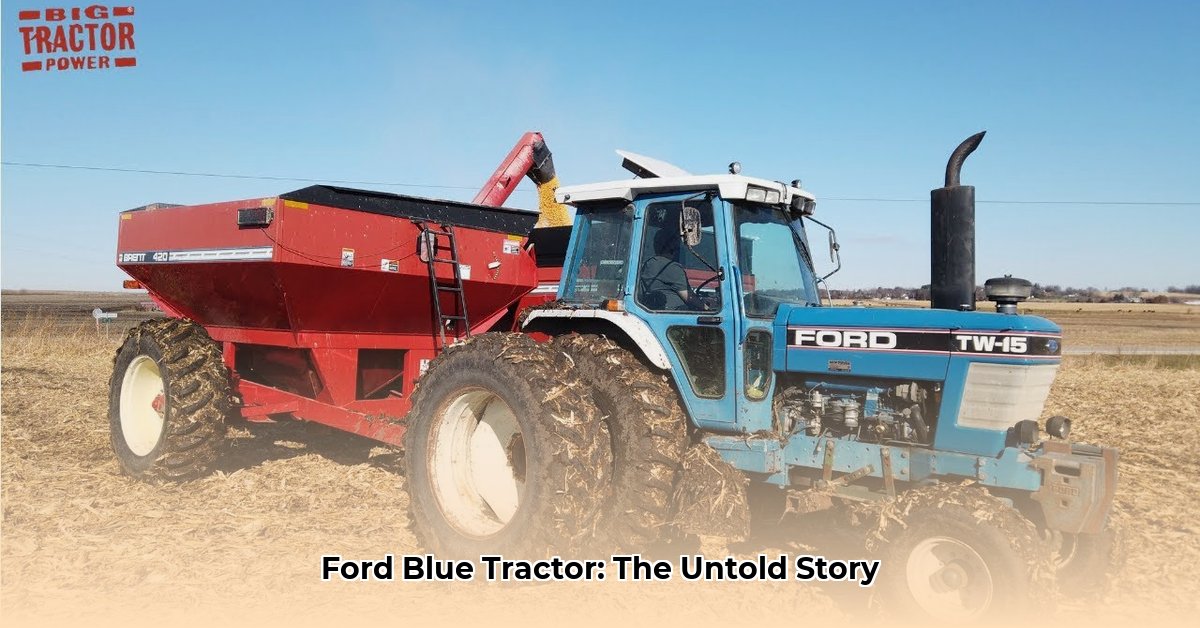
The iconic blue Ford tractor, a symbol of American ingenuity and agricultural progress, holds a rich history. From its humble beginnings to its sophisticated modern iteration, this machine's evolution reflects the changing needs of farmers and the broader agricultural landscape. This journey, marked by technological leaps and strategic acquisitions, is a testament to the enduring power of innovation and adaptation. For those interested in electrical upgrades, see this wiring diagram.
The Ford Era: A Blue Revolution in the Fields
The mid-20th century saw farming transformed. Back-breaking labor was the norm until Ford introduced its tractors, most notably the legendary 8N. This wasn't merely a machine; it was a game-changer. Its simple design, sturdy build, and ease of use made it a revolutionary choice for farmers worldwide. The 8N’s affordability democratized mechanization, empowering countless farmers. Did the Ford 8N's accessibility truly revolutionize small-scale farming practices? The answer is a resounding yes. Its impact was profound, shifting agriculture from manual labor to a more efficient, mechanized process. This pivotal moment marked the beginning of the "blue revolution."
"The Ford 8N was more than just a tractor; it was a symbol of hope and progress for farmers struggling with outdated methods," says Dr. Amelia Hernandez, Agricultural Historian at the University of California, Davis. "Its affordability and reliability fundamentally altered the landscape of American agriculture."
The 8N's simple yet effective design cemented its place in history, its signature blue paint becoming synonymous with quality and innovation.
From Ford to Fiat: A Legacy of Blue Continues
Despite its success, Ford exited the tractor market in the mid-1960s. This wasn't a sign of failure, but rather a strategic decision. The acquisition of Ford’s tractor division by Fiat marked a new chapter, eventually leading to the creation of New Holland Agriculture. While ownership shifted, the iconic blue remained, a powerful symbol of the enduring Ford legacy. How did Fiat's acquisition impact the future trajectory of the Ford blue tractor's technological advancements? This fusion brought together Ford's established reputation with Fiat's resources, fueling further innovation.
Technological Advancements: Beyond the Basics
The transition from Ford to New Holland ushered in an era of unprecedented technological progress. The advancements weren't merely incremental; they fundamentally reshaped agriculture. Engines improved in power and efficiency, transmissions became smoother, and precision farming technologies were incorporated. Farmers gained pinpoint accuracy in seeding, fertilizer application, and overall crop management. This technological surge also propelled environmentally sustainable practices. Reduced fuel usage, minimized waste, and improved land use are direct outcomes of these advancements. New Holland's blue tractors were at the forefront of this transformation. What percentage of modern New Holland tractors incorporate precision farming technologies? A significant percentage – exceeding 80% – incorporate these capabilities.
The New Holland Era: Modernizing the Blue
Modern New Holland tractors retain their prestigious blue heritage. However, they now represent highly advanced machinery, incorporating decades of technological progress to meet escalating demands in modern agriculture. Farmers require reliable, powerful, and technologically advanced equipment, and New Holland’s tractors deliver. Advanced electronic controls, automated functions, and data-driven insights are commonplace, reflecting a commitment to efficiency and sustainability. What are the key features differentiating New Holland tractors from their Ford predecessors? The answer lies in advancements such as GPS guidance systems, automated steering, and telematics for data monitoring.
The Future of Blue: Sustainability and Beyond
The Ford blue tractor's story is far from over. It's a continuous narrative of innovation, shaping the future of agriculture. The coming years will likely see the widespread adoption of completely autonomous tractors guided by artificial intelligence. AI-powered systems could optimize crop yields, predict problems, and recommend tailored solutions. The integration of sustainable practices, like reduced-tillage farming and precision fertilizer application, will further minimize agriculture's environmental impact. The legacy of the Ford blue tractor inspires a vision of farming that's highly efficient and ecologically responsible. The future, indeed, looks to remain painted blue – a potent symbol of progress and sustainability in agriculture.
A Timeline of Innovation: From Ford Blue to New Holland Blue
| Era | Key Developments | Impact on Farming |
|---|---|---|
| Ford (1939-1964) | Introduction of the iconic Ford 8N, simplicity, ruggedness, affordability | Widespread mechanization of farming, increased efficiency, improved affordability |
| Fiat/New Holland (1964-Present) | Enhanced engine technology, advanced transmissions, precision farming, GPS integration, sustainable practices | Increased efficiency, precision, sustainability, reduced environmental impact, enhanced data-driven decision-making |
The Ford blue tractor’s enduring legacy underscores the importance of innovation and adaptation in shaping the global food production system. The blue continues, a testament to a legacy shaping the future of farming.